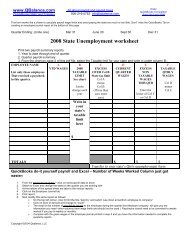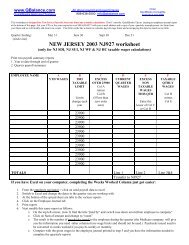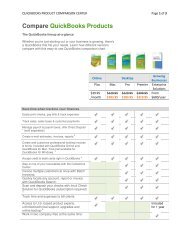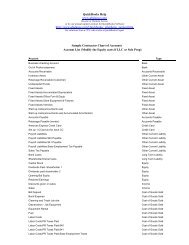Construction Industry - Audit Technique Guide - Uncle Fed's Tax ...
Construction Industry - Audit Technique Guide - Uncle Fed's Tax ...
Construction Industry - Audit Technique Guide - Uncle Fed's Tax ...
Create successful ePaper yourself
Turn your PDF publications into a flip-book with our unique Google optimized e-Paper software.
• Treat the entire contract as a long-term manufacturing contract subject to thepercentage of completion method of accounting. (Note: there is not a 95% rule aswith the election to treat a hybrid contract as a construction contract.)Treas. Reg. § 1.460-1(f)(2) Hybrid contracts - -(i) In general. A long-term contract thatrequires a taxpayer to perform both manufacturing and construction activities (hybridcontract) generally must be classified as two contracts--a manufacturing contract and aconstruction contract. A taxpayer may elect, on a contract-by-contract basis, to classifya hybrid contract as a long-term construction contract if at least 95% of the estimatedtotal allocable contract costs are reasonably allocable to construction activities. Inaddition, a taxpayer may elect, on a contract-by-contract basis, to classify a hybridcontract as a long-term manufacturing contract subject to the [percentage of completionmethod (PCM)].De minimis <strong>Construction</strong> ActivitiesA contract with de minimis construction activities is not a construction contract underIRC § 460 if the contract includes the provision of land by the taxpayer and theestimated total contract costs attributable to the construction activities are less than10% of the contract's total contract price. For purposes of the 10% test, the cost of theland provided to the customer is not included in the allocable contract costs. Treas.Reg. § 1.460-1(b)(2)(ii).This 10% threshold provides a "bright-line" test. Prior to enactment of the regulation,Notice 89-15 provided that a contract was a construction contract if the constructionactivity required by the contract was necessary for the taxpayer to fulfill its contractualobligations.Example:A developer owns 5,000 acres of undeveloped land with a cost basis of $5,000,000. Toobtain permission from a local county government to improve this land, a service roadmust be constructed on this land to benefit all 5,000 acres. In 2001, the developerenters into a contract to sell a 1,000-acre parcel of undeveloped land to a residentialdeveloper for $10,000,000. In the sales contract, there is a provision that commits thetaxpayer to construct the portion of the service road that benefits the acreage sold, asrequired by the local county government. The portion of the cost of the service roadattributable to the 1,000-acre parcel is estimated to be $10,000. The service road is notcompleted until 2002. Because the estimated total allocable contract costs attributableto the construction activities ($10,000) are less than 10% of the total contract price($10,000,000), the contract is not a construction contract, and is not to be accounted forunder a long-term contract method.2-6













